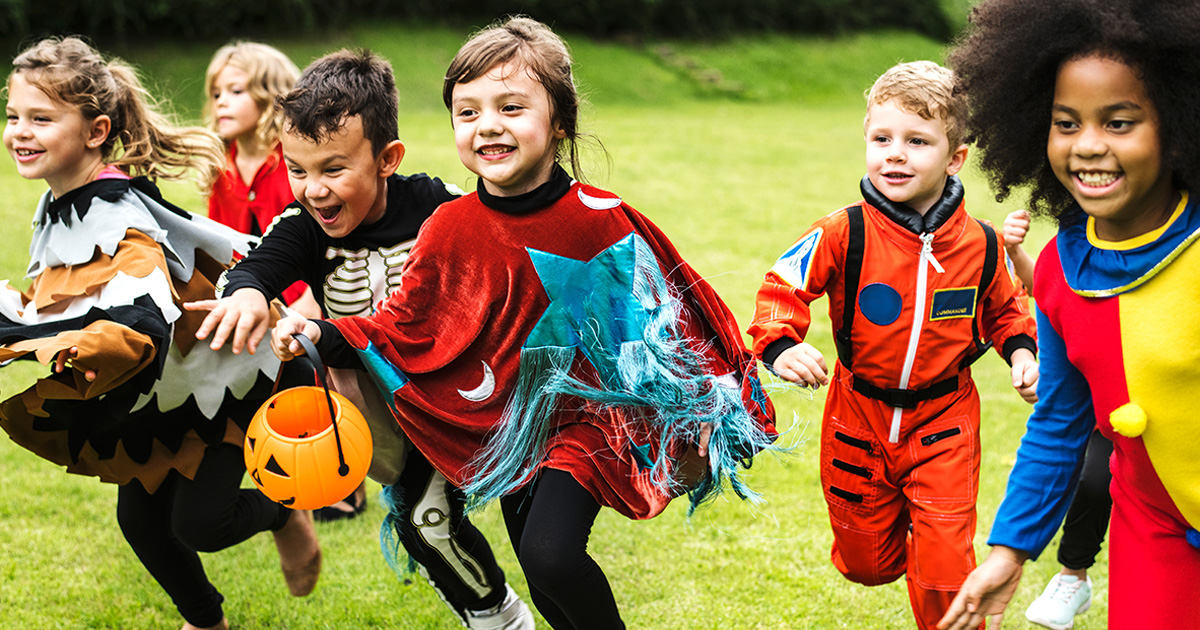- 844.422.9533
- Schedule a Tour

For many families, the Halloween season can be an exciting time of year but playing it safe is just as important as making sure everyone has a ghoulishly good time. And we’re here to help!
Participating in Halloween traditions gives people of all ages a chance to be creative, let their imaginations run wild, and embrace the joy of make-believe. Maybe you’re inspired by a favorite character or something wickedly cute. Perhaps you love the chance to be wildly silly in hopes of making someone laugh. Or maybe it’s all about flexing your design skills to showcase pure originality.
No matter what your child’s costume looks like, we want to encourage you to always keep their safety top of mind—before, during, and after the festivities. Did you know? Children are more than twice as likely to be hit by a car while out walking on Halloween compared to any other day of the year.
We’ve compiled a list of helpful tips to help you keep everyone in your family safe and healthy.
Plan Ahead
- Outline a trick-or-treating route in advance, before it gets dark. Identify any possible obstacles or hazards that could put your child at risk.
- Express the importance of staying together and review street safety rules.
- Eat a healthy meal or snack before heading out. This helps to give your child good energy and reduces the likelihood they’ll eat too many treats.
- Consider using flameless candles for pumpkins to reduce the risk of fire and/or burns.
Safe Costume Attire
- Inspect your child’s costume. Look for anything that could cause your child harm:
- Masks may obstruct a child’s view or not be well ventilated. Consider using non-toxic face paint to create your intended disguise.
- Look for flame-resistant fabrics to prevent the possibility of a child getting burned if they stand next to candle-lit décor.
- Capes and other accessories can cause strangulation risks. Be sure there is nothing tied too tightly around your child’s neck. Make sure tripping will not be an issue.
- Consider adding reflective tape to costumes and treat bags.
- Use safety lights, glow sticks, or light-up shoes to help boost visibility.
While Trick-or-Treating
- Supervision is important. Be sure to scan the environment for any potential dangers, such as crowds, speeding cars, strangers, or even unfamiliar animals.
- Remember your planned route and visit only well-lit homes. If possible, stay on the sidewalks.
- Remind children to walk instead of running between houses.
- Be mindful of what your child has in their hands. Avoid allowing them to carry too much (i.e., a costume prop, a candy bag, an umbrella, etc.)
Back at Home
- Examine all treats before eating. Discard any candy that is homemade from an unknown source, unwrapped, or you are not familiar with.
- Be sure to supervise your child when they’re eating candy to avoid choking hazards.
- Talk about food allergies and why they should avoid sharing candy with friends.
- Help your child build healthy habits by talking about the importance of rationing candy consumption.
Alternatives to Consider
- Local churches or community centers may offer Halloween night activities.
- Try attending trunk-or-treat event at a local school, church, or business.
- Plan a family-friendly gathering at home with themed games and movies.
Keeping all these tips in mind will help to create a safe and healthy Halloween for everyone.
